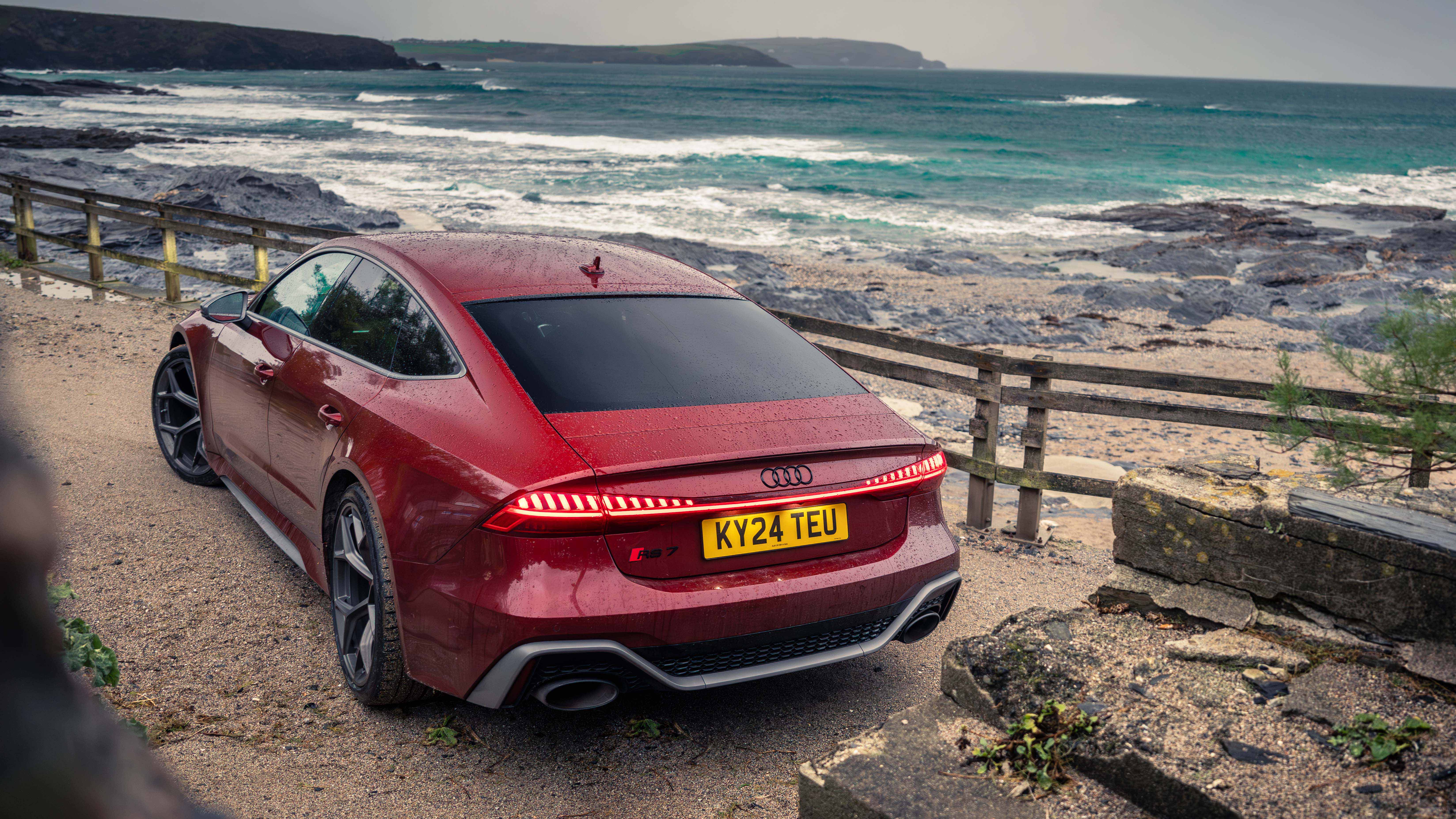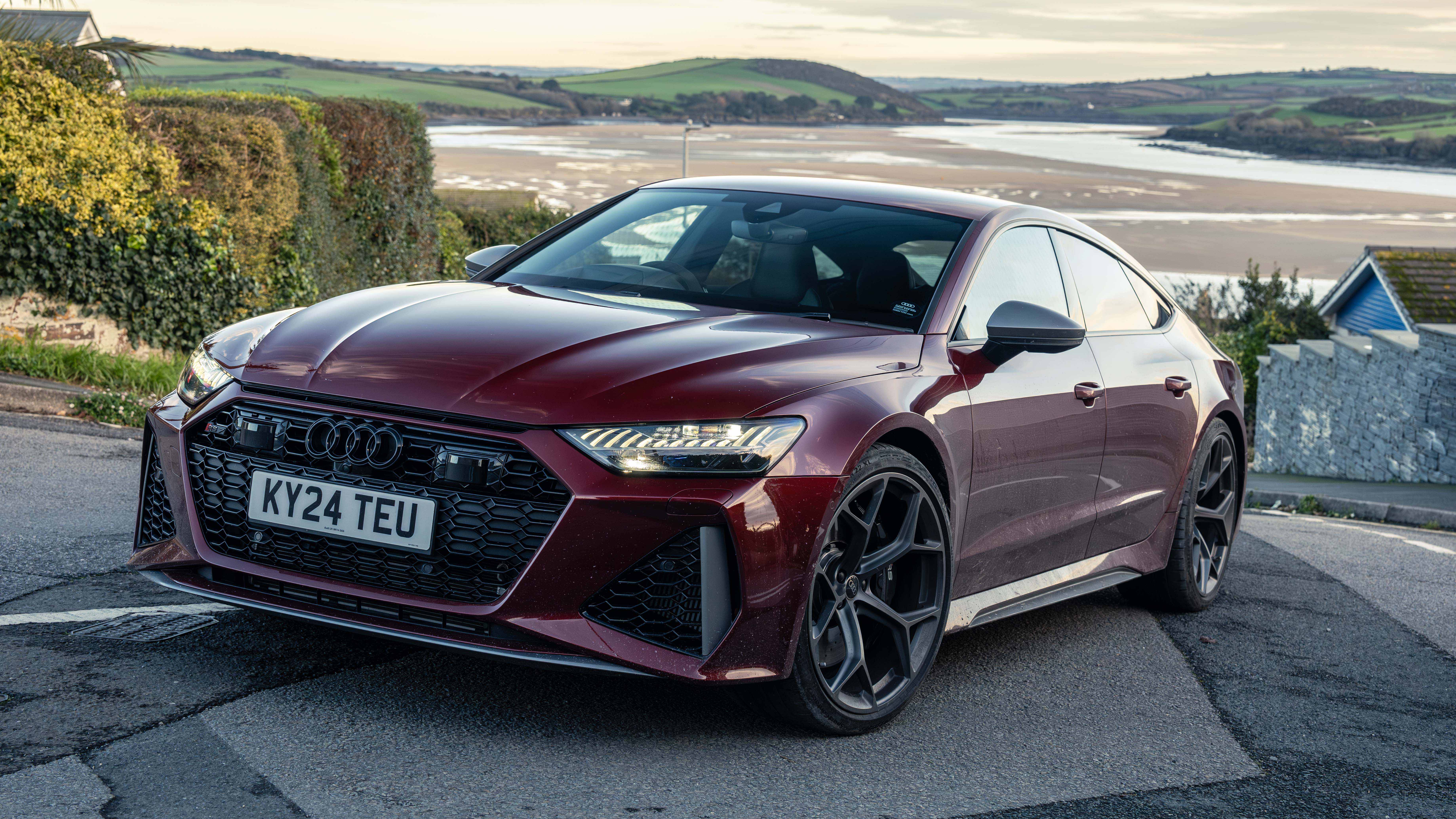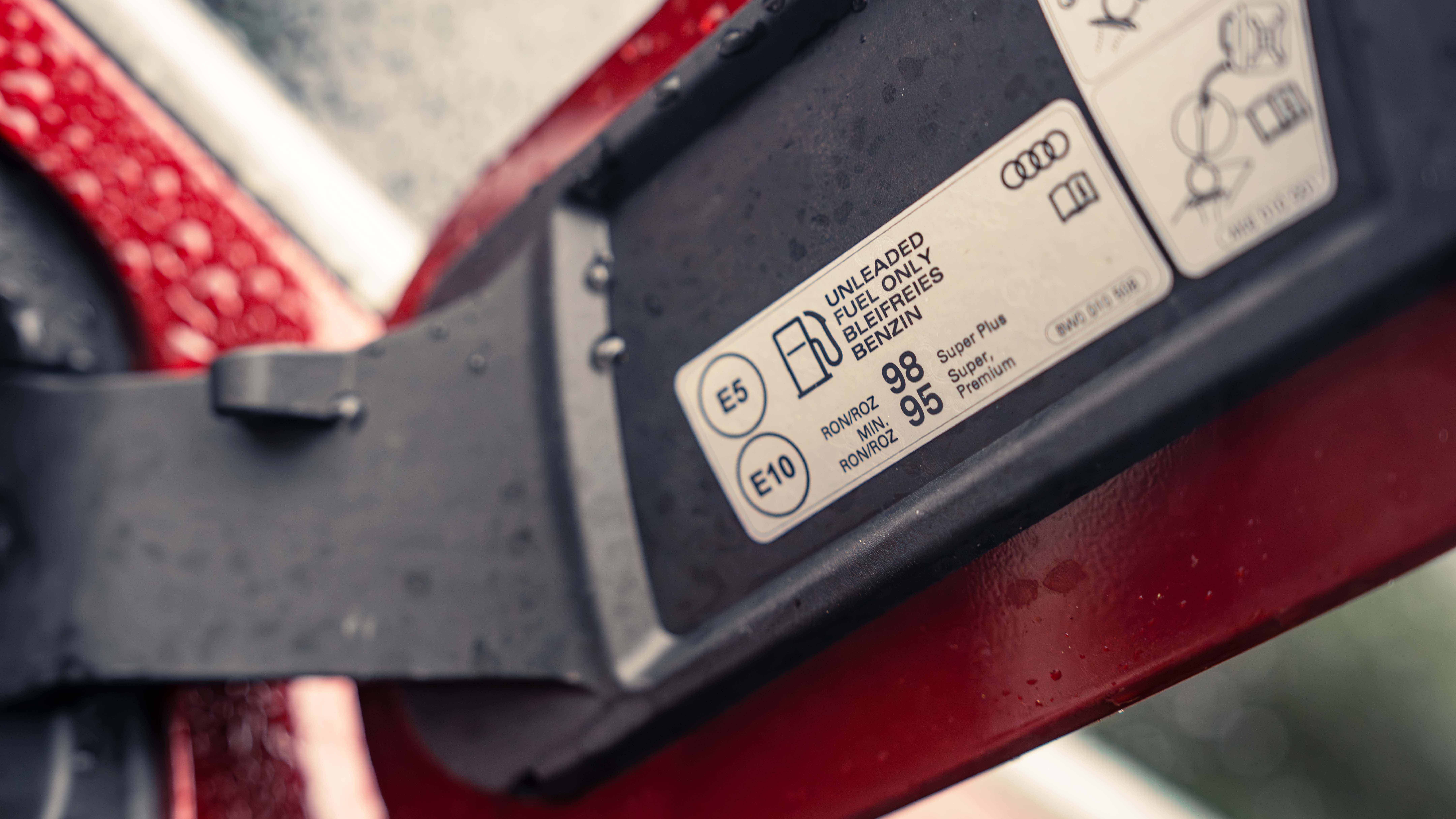
SPEC HIGHLIGHTS
- SPEC
Audi RS7
- ENGINE
3993cc
- BHP
552.5bhp
- MPG
28.8mpg
- 0-62
3.9s
How did the Audi RS7 fare in a real-world test from London to Padstow?
It’s officially quattro Season. The roads are covered in leafy mulch, Sandy Spitter the Big Gritter is throwing her salt around, and big ol’ Storm Bert rocked up to whip up mad winds, heavy rainfall, and snow – all in one go. But – bizarrely – this carnage, combined with a winter cruise to Cornwall, helped me get on board with the RS7 Performance that little bit more.
It's not like we weren’t getting on, but they say distance makes the heart grow fonder, and I couldn’t have gotten further away earlier in the month, considering I was in New Zealand. You may have read that I threw the RS7 keys to Mr Kew in my absence (complete with Apple AirTags dangling from each of the deliciously dished 22in wheels to detect kerbings from the other side of the world), but I was glad of the separation as I needed space to think about where I stood on Audi’s super shatchback (saloon hatchback).
Why? Well, I find it confusing at times. It’s got the devastating straight-line performance of an intercontinental ballistic missile mixed with the leather, downlighting, and refinement of a private members' club. Yet it always feels like it could lean into each aspect a bit more. It’s a fabulously appointed cabin, but it’s not extremely comfortable or state-of-the-art: the seat is too high, and the screens aren’t reactive enough. At least there are physical buttons. And while the performance is there, under a low wall of turbo lag, you’re not goaded or encouraged to use it as it’s weirdly undramatic at times – especially in the dry.
This is a quintessential Audi trait: fast, clinical, and often paired with understeer. The RS7 has a positive front end. The steering is numb, and the rack too quick in combination with the rear-wheel-steer, but it bites into corners and digs itself out with 4WD. Future RS models might be even spicier if the Nürburgring test mules sliding around industry pool sessions are anything to go by.
Over the summer, with warm temperatures and the devastatingly effective 4WD system, the chassis felt so glued down it was inert. You want it to be alive, to move around, and to give you feedback – which, now there’s less grip on the road, it does. You can feel where, when, and how the quattro system is working and when the new, standard Sport Differential at the back – in addition to the self-locking centre differential – is engaging. This instantly makes you more impressed with the engineering and the car as a whole.
And it is a mighty all-rounder, much like its bootier sibling is praised for. I have to say I’m starting to prefer the look of the RS7 more – it’s rare groove. Plus, London to Padstow and back is as real-world as a real-world test can get, including the mandated Rick Stein’s fish and chip dinner in the middle. It’s a mix of urban driving, motorways, A-roads, fast sweeping B-roads, and those Cornish lanes so narrow they might as well give you a tub of Vaseline for the arches on the border.
The RS7 carved through it all with unflappable calm and without a batting one of its funky LED lashes. Its adaptive air suspension soaking up the worst the road could offer while the quattro system distributed power effectively – providing swift progress and surefootedness.
As you can become numb to these things, to remind myself of the RS7’s absurd capabilities (and keep our Rick Stein takeaway warm), I strapped in a mate, balanced six portions of cod and chips on his lap, engaged launch control, and buried the throttle. Suffice to say he screamed, gripping the door handle and losing his appetite in the process.
On the way home, I decided to get geeky and play with the RS7’s mild hybrid system. This clever bit of kit doesn’t just recycle brake energy like everyone else – no, it harvests power from the crankshaft via a belt alternator starter, stashes it in a lithium-ion battery, and redeploys it to shut off the engine while coasting between 34 and 99 mph for up to 40 seconds. Below 13mph, it can do the same as you approach a stop. It’s all in the name of saving fuel, with Audi claiming up to 0.8 litres per 100 km. In real-world terms, over 300 miles, that translated to about 27 mpg – decent, but I’m keen to test it further with a longer run and keener eye on the science.
But with Bert turning Britain into Atlantis on the return leg, the RS7 struggled with aquaplaning. You’d think 2,065 kg of kerbweight would help, but the Continental SportContact 6 tyres really struggled to shift the water, with the car shimmering all over the place and wandering out of control. I think a shift to winter tyres might offer a useful point of comparison, especially as I suspect a long trip to the mountains is incoming in the new year. That’s where you see the inherent security, safety, and reassurance of Audi’s iconic four-wheel drive at work most visibly. So wax the skis and watch this space.
Featured

Trending this week
- Car Review
Renault Clio
- Car Review
Hyundai Kona






